Tender slices of potato dipped in batter and then fried to golden perfection. Scalloped potatoes in batter are perhaps not the healthiest dish on the menu, but they are certainly one of the tastiest!
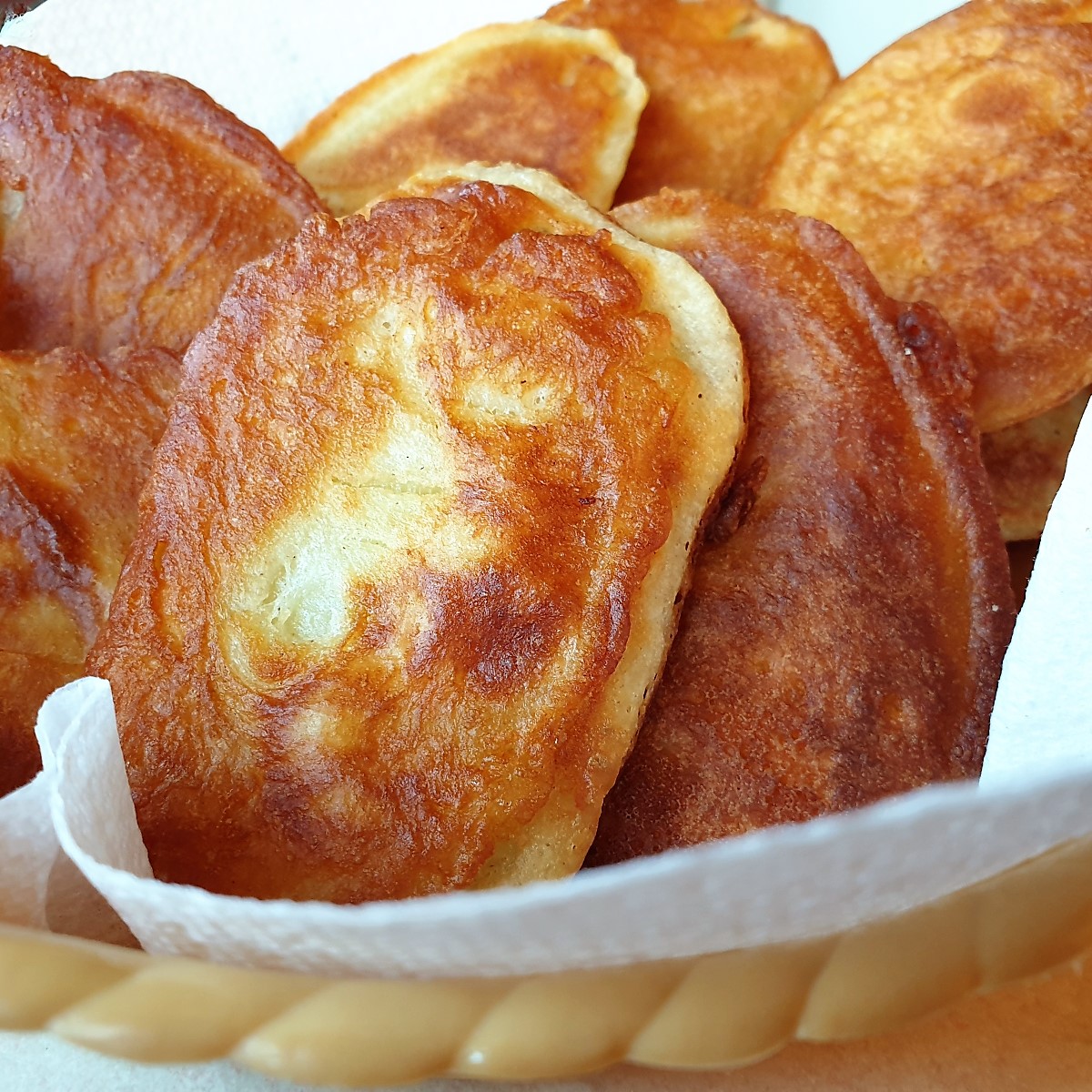
**As an Amazon affiliate, I earn from qualifying purchases.**
Jump to:
A different way to prepare potatoes
Growing up in the north of England meant that scalloped potatoes in batter made their appearance on the menu quite often. As a child, I loved them. I remember crunching through the crispy golden batter to get to the creamy potato inside. Sometimes we had them with fish fingers and peas, but more often than not we'd eat them fresh out of the pan, with a dollop of tomato sauce to dip them in.
These days, of course, people are far more health-conscious, and a scalloped potato in batter wouldn't find its way onto most people's tables. However, with the supermarket shelves being barer than normal, I thought it appropriate to resurrect this recipe, as it means you need fewer potatoes to feed a family, than for example if you were just making normal chips or fries.
If you are looking for a recipe for chips or fries, why not try this recipe for crispy potato fries. You might also be interested in this recipe for a potato frittata, or even these German fried potatoes.
And I'm a firm believer that anything in moderation can't do you any harm. As long as you are not eating these every night of the week, it's a way of adding a bit of variety to your normal way of preparing potatoes.
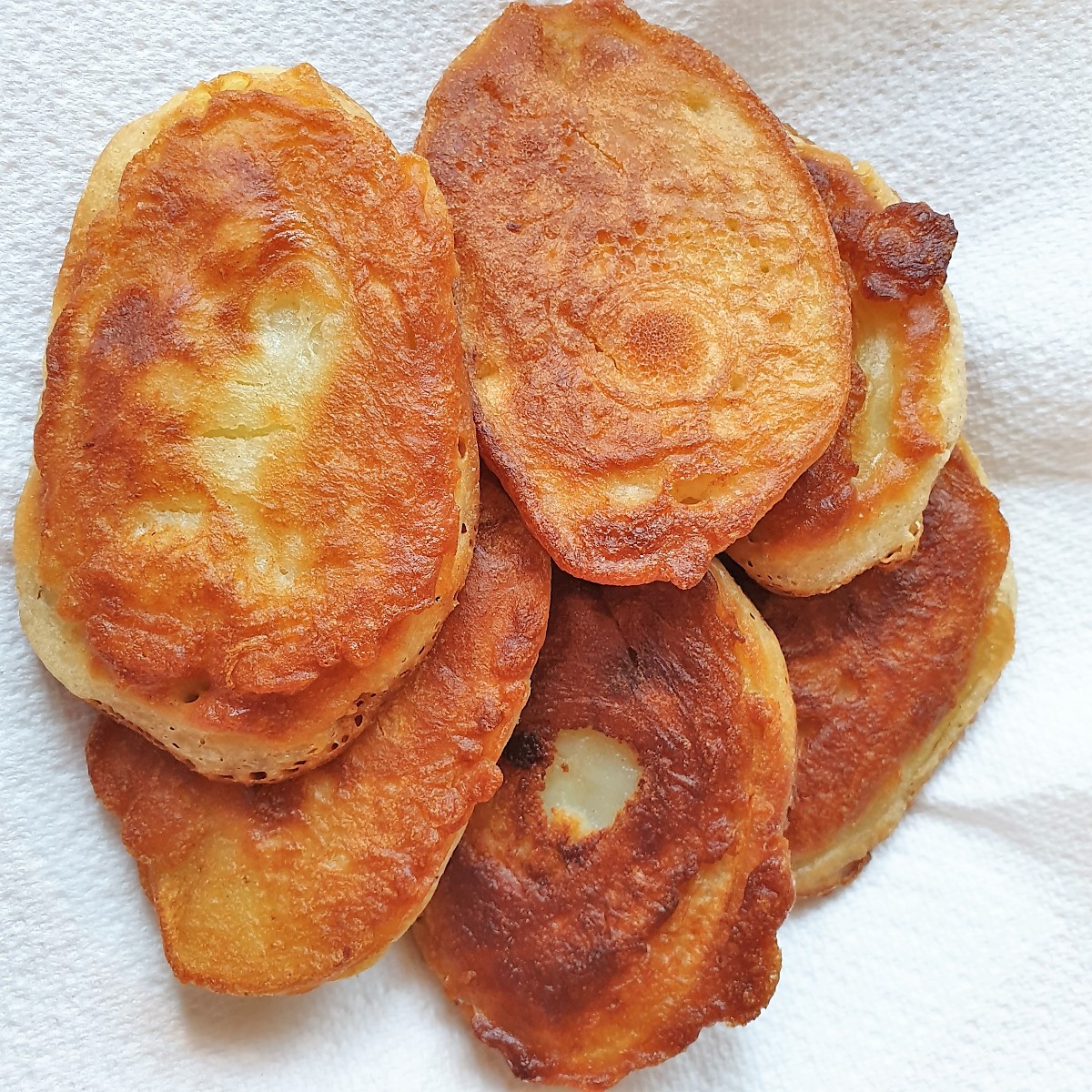
Recipe information
- Prep time - 15 minutes
- Cooking time - 20 minutes
- Yield - 12 scalloped potatoes
- Calories - 100 each
- Main equipment - mandolin. Of course, you can use a sharp knife to slice the potatoes, but a mandolin makes it so much easier 🙂 .
How to make scalloped potatoes in batter
You can get the complete list of ingredients and full instructions for making scalloped potatoes in batter on the printable recipe card at the end of this post.
You will need sufficient potatoes to feed the number of people in your family. If I make them at home, there are only 2 of us, and I find that 2 medium-sized potatoes are ample, and there are normally a couple of scallops left over.
A medium potato yields 6 or 7 slices. If you use larger potatoes, you will obviously get more slices. If you are serving these as part of a meal, with fish or example, or with sausages, then you will need 4 or 5 slices per person, depending on the size of your potatoes.
You will also need flour, salt, eggs and milk to make the batter. If you have self-raising flour, you can use this. If you only have plain flour you can add 1 teaspoon of baking powder to each cup of flour.
Finally, you will need sunflower or canola oil for frying. Don't use olive oil as this has a lower smoke point than sunflower oil and will not allow the batter to crisp properly.
Step-by-step instructions
Prepare the potatoes
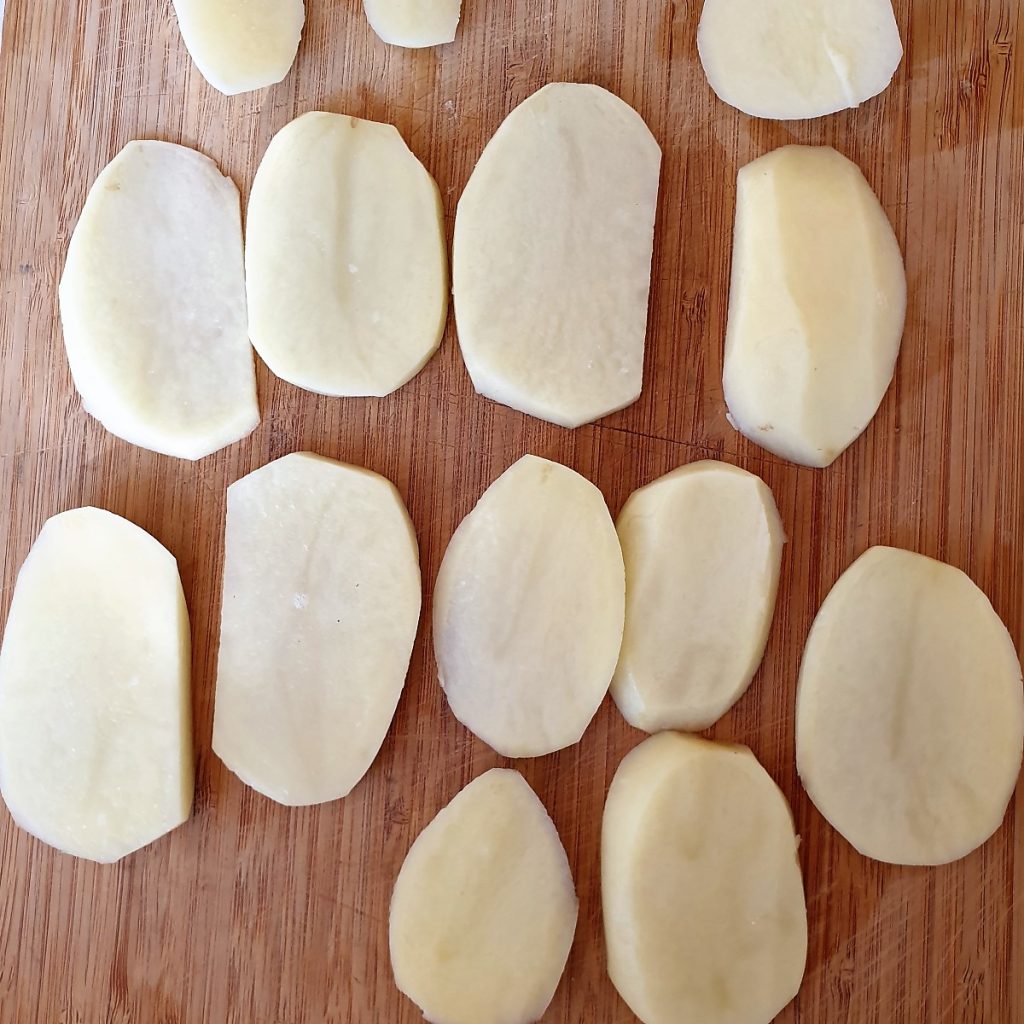
- Peel the potatoes and cut them into slices approximately ⅛" in thickness. Don't make them any thicker than this or the potato will not have time to cook all the way through before the batter has browned.
- If you prefer, you can place the potatoes in boiling salted water for 2 minutes to allow them to pre-cook, but I don't find this step necessary.
- Pat the potatoes dry with a piece of kitchen paper.
- Sprinkle the potato slices lightly with salt. If you are on a low-salt or no-salt diet then this step is obviously optional.
Make the batter
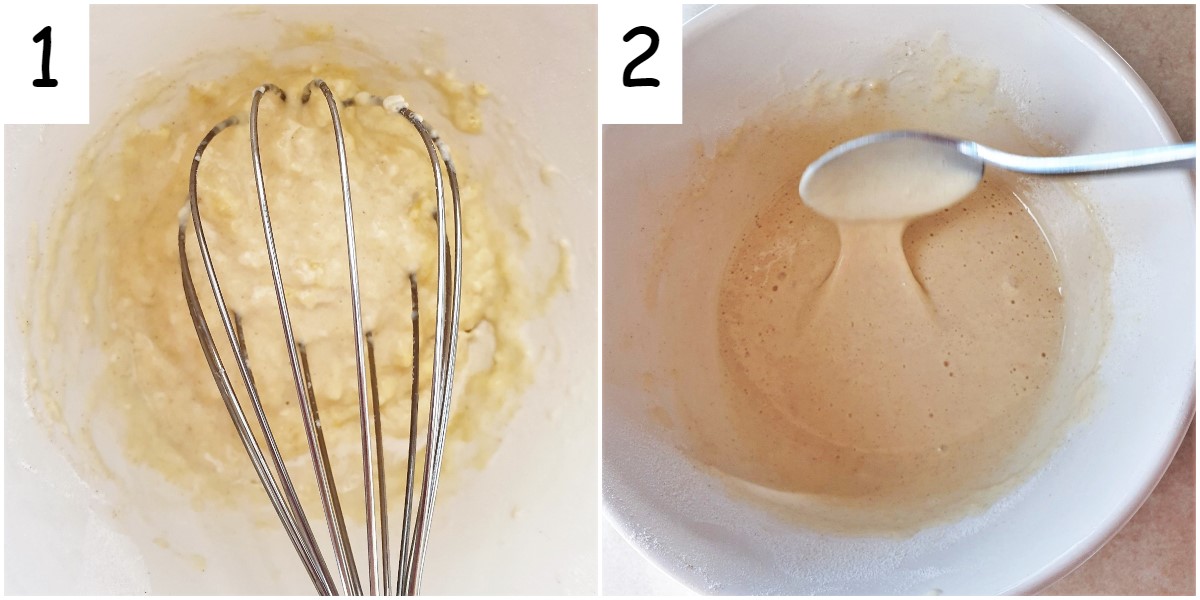
The next step is to make the batter. The quantities here are sufficient to coat about 14 slices. If you are making more you can double the ingredients.
- Break 1 egg into a mixing bowl
- Add 3 tablespoons (about 50g) self-raising flour and ½ teaspoon salt and mix to combine.
- Pour ¼ cup milk (about 75 ml) slowly into the batter and whisk to remove any lumps. You may not need all the milk.
- The consistency of the batter should be like that of crepes or pancakes. It should drop slowly from the spoon and leave a trail if you draw the spoon through it. It should be thick enough to coat the potato slices.
Fry the potato scallops
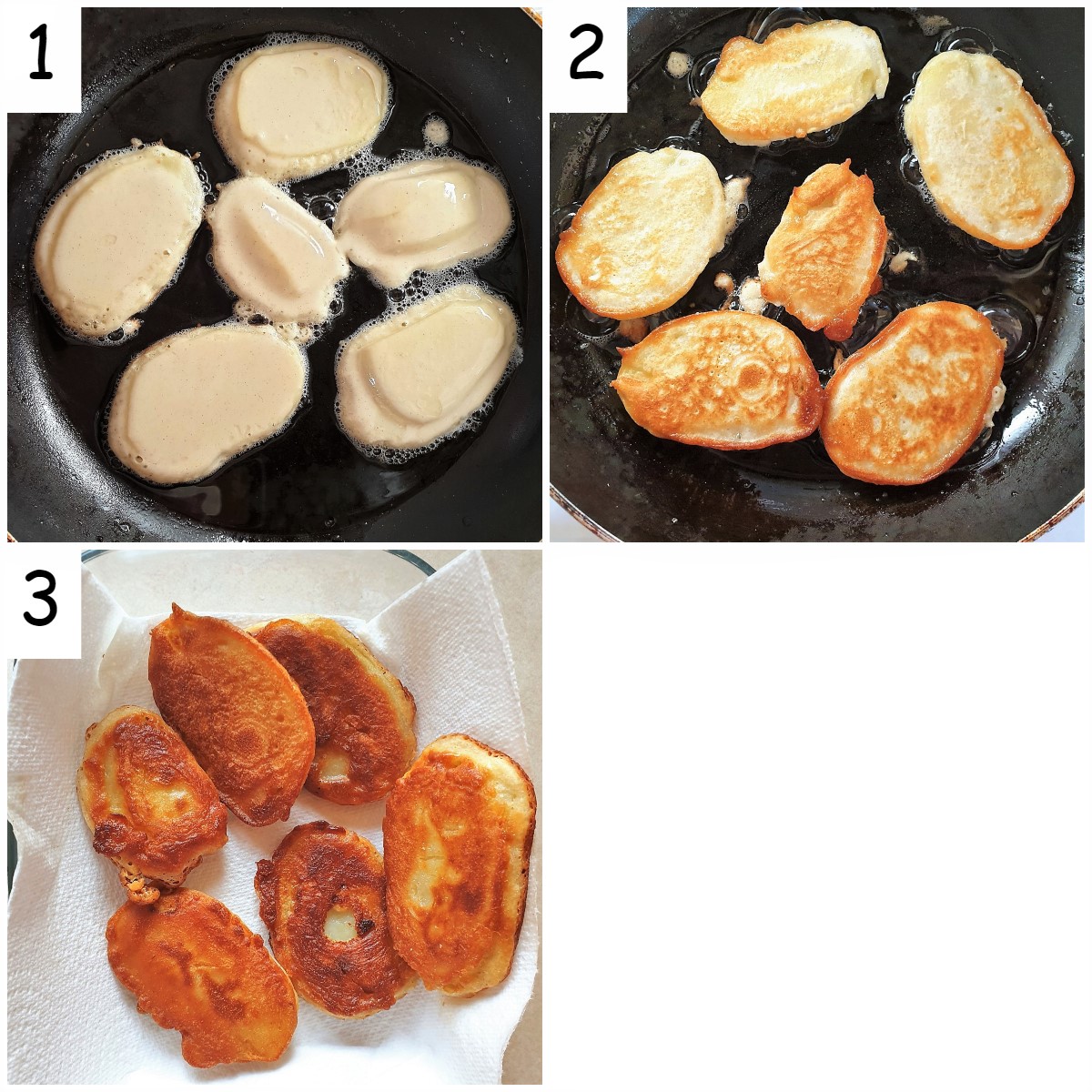
- Heat about 1cm of oil in the bottom of a frying pan. Let it get quite hot, then turn the heat down to medium.
- Dip slices of potato into the batter, then carefully place them in the hot oil. Don't overcrowd the pan, leave enough room to turn them easily.
- Fry gently until they start to turn brown on the bottom, and bubbles appear on the edges of the scallops. Don't be tempted to turn the heat up and fry at a high heat. These need to be cooked slowly to allow the potato to soften.
- Turn the potato slices over with a spatula and fry the other side. Keep turning and frying until golden brown all over. It should take between 8 and 10 minutes for the potatoes to soften.
- To test whether the potato is cooked through, prick with the point of a sharp knife. If it slides in easily with no resistance then the potato is cooked. Test this on a piece of raw potato to feel the resistance to the knife.
- When cooked, remove from the frying pan and drain on kitchen paper. Then transfer the battered potatoes to an oven-proof dish and keep warm in a medium oven while you fry the rest of the slices.
- Serve as a side dish with fried fish or sausages, or just eat on their own with your favourite dipping sauce.
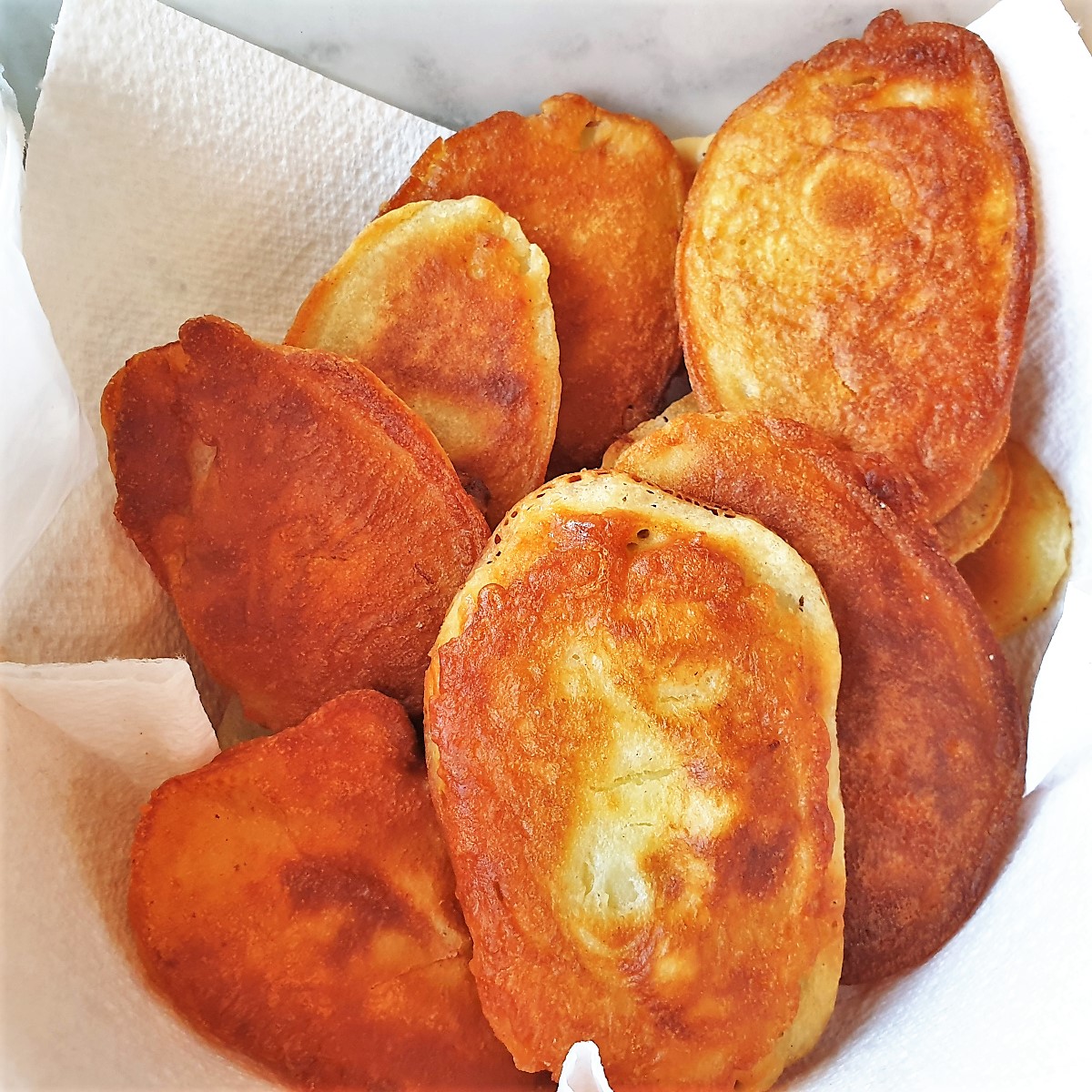
Can I freeze scalloped potatoes?
Unfortunately, these cannot be frozen. They are best eaten fresh. However, leftovers can be covered with kitchen paper, left in the fridge overnight, and reheated in the microwave or oven the next day. They will not be crispy, but they will still taste delicious.
Save for later
Why not pin this recipe for battered potatoes to one of your Pinterest boards so you can make it later? Just click the image below.
Alternatively, you can save the recipe by clicking on the floating heart icon on the right-hand side of the screen.
Other recipes
You may also like these other potato recipes
📋The recipe
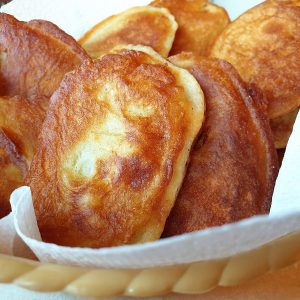
Scalloped potatoes in batter
(Click the stars to rate this recipe)
Ingredients
- 2 medium potatoes
- 1 large egg
- 3 tablespoons / 50 grams self-raising flour
- ¼ cup / 75 ml milk
- salt to taste
- 1 cup sunflower oil (approximately) for frying
Instructions
Prepare the potatoes
- Peel the potatoes and slice them thinly - approximately ⅛ inch in thickness.2 medium potatoes
- Pat dry with paper towel and sprinkle lightly with salt.salt
Make the batter
- Break the egg into a mixing bowl and add the self-raising flour. Mix to combine.1 large egg, 3 tablespoons / 50 grams self-raising flour
- Add the milk slowly, whisking to remove any lumps. You may not need all the milk. You are aiming for a coating consistency.¼ cup / 75 ml milk
Fry the scallops
- Heat approximately 1cm sunflower oil in a frying pan until it is quite hot, then turn down the heat.1 cup sunflower oil
- Dip each scallop into the batter and then carefully place into the hot oil.
- Fry gently until bubbles start to appear on the edges of the scallop and the underside is nicely browned.
- Carefull turn the scallops with a spatula and fry the other side.
- If necessary repeat the turning process until browned all over and the potato is soft and cooked through.
- Drain on paper towel, then keep warm in a warm oven until all the scallops have been cooked.
Notes
Nutrition
I am not a nutritionist. The nutrition information has been calculated using an on-line calculator, and is intended for information and guidance purposes only. If the nutrition information is important to you, you should consider calculating it yourself, using your preferred tool.
If you made this recipe and enjoyed it, I'd love it if you could give me a star rating in the comments below. And if you'd like to get in touch, you can email me at [email protected]. I'd love to hear from you. And don't forget to subscribe to my mailing list so you can grab yourself a copy of my FREE COOKBOOK!
If you'd like to continue browsing, just click on this link to all my recipes.



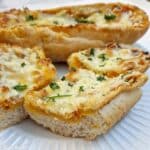
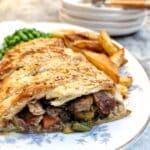
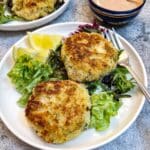
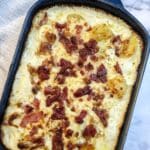
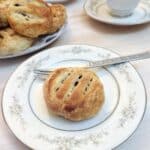
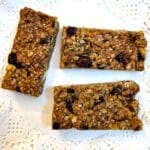
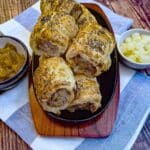
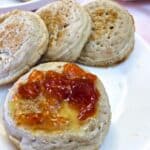
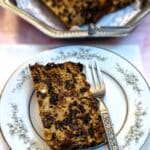
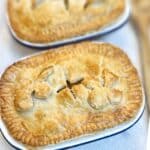
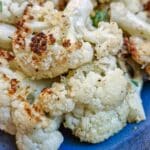
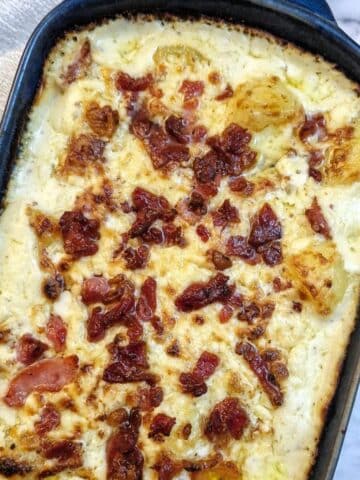
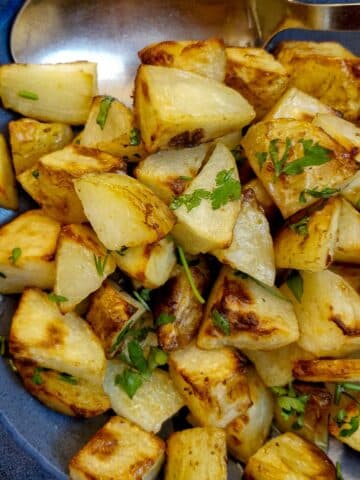
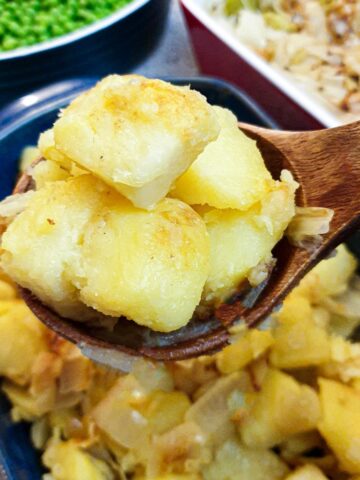
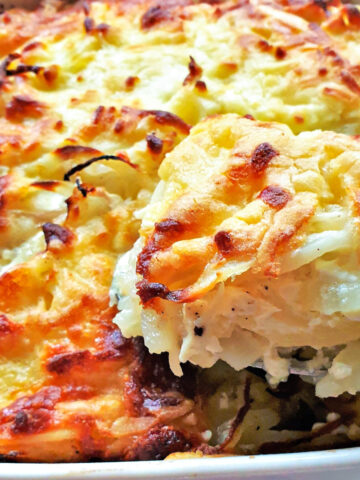
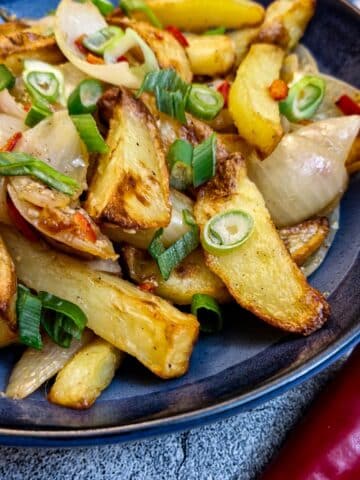
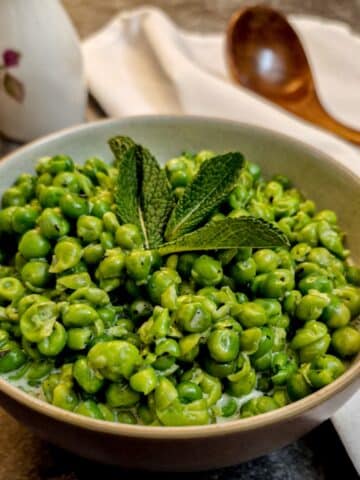
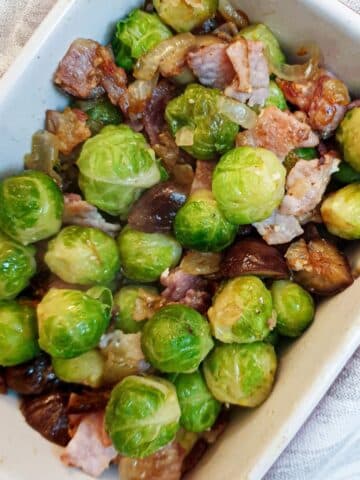
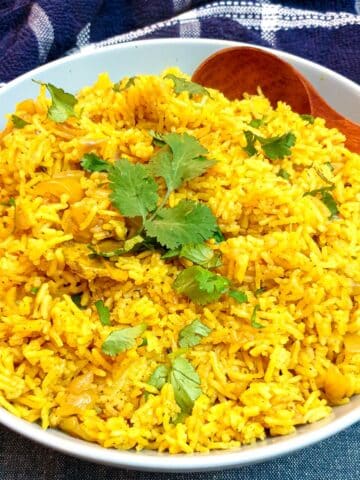
Laraine Anne Barker
Thanks so much. My recipe was considerably different, basically flour and water and baking powder, which I also used for fish in batter, and I cooked them in a deep fryer, in good old-fashioned beef dripping. We call them potato fritters in New Zealand and I no longer have a deep fryer so was looking for a recipe that can be shallow fried. This sounds perfect.
VJ
Hope you enjoy them. I grew up eating these. They were my favourite after-school snack!
Chantelle Jepson
I've been looking erywhere for this recipe so thanks so much! My Moms from Burnley and she just passed this year. I've been missing hher and longing for her cooking! She called these skons but when I try and look these up on Google all I can find are scones (another childhood fav my Mamas would call sad cake as it's a depression era recipe maybe even prior) which are totally different. These are savory and delicious! Thanks so much!!
VJ
Aw, thanks Chantelle. Glad I could help.
Maureen Cram
Making these tonight for supper... I also don't eat animal products so will use cashew milk and a bit of baking powder. When we are not in the US we live in George South Africa :). This is also a recipe that reminds me of my London childhood :). Many thanks for posting it.
VJ
I hope you enjoy them 🙂
Jean TEMPEST
A blast from my past -served in Oldham chippies - The amount just right for the two of us. However as we don't eat eggs or drink cows milk I substituted them for cream of tartare and bi-carb and soya milk. They were devine.
VJ
Definitely an old-time recipe! My mom used to make them when I was growing up in England in the late 50s. Good to know your substitutions turned out so well 🙂
Cheryl Farrens
My mother was british and she made potatoes like this which she called "specials". I'm going to make some tomorrow. Thank you for sharing your recipe.
VJ
Hi Cheryl, hope you enjoy them. My mother used to make these all the time when I was growing up 🙂